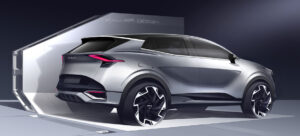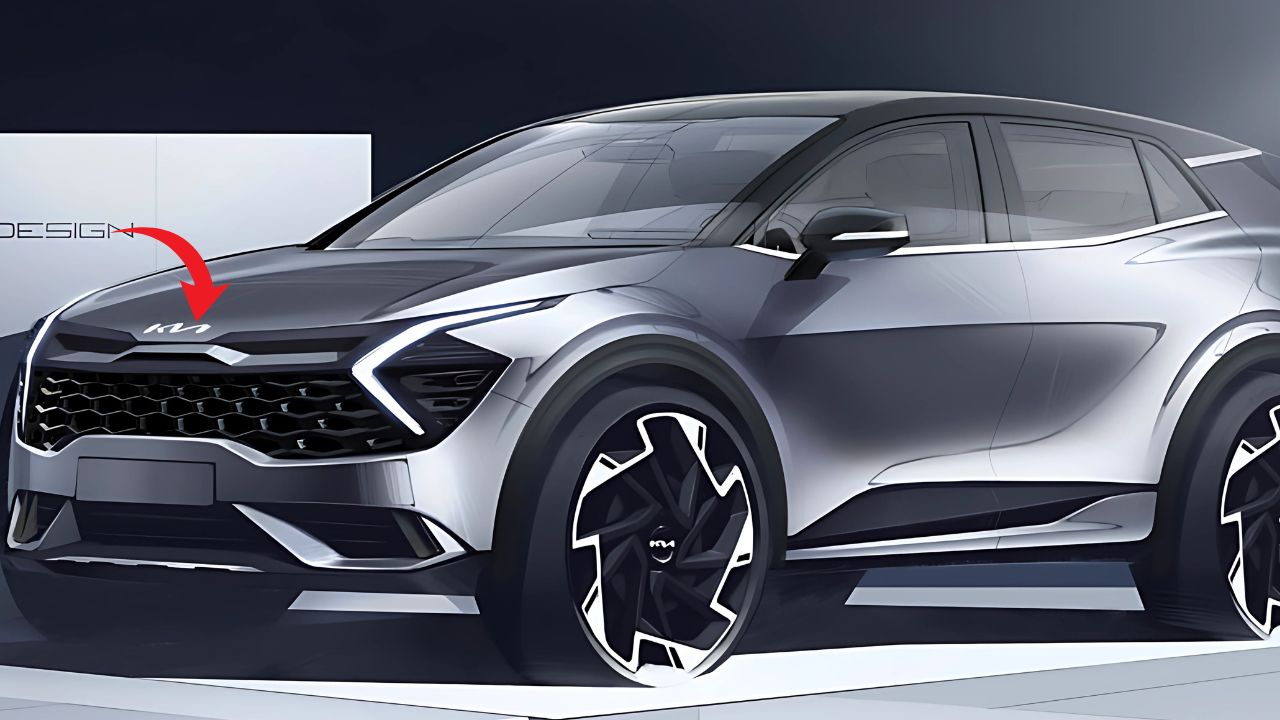The Kia Sportage has evolved into one of Australia’s most popular medium SUVs, capturing hearts from Melbourne to Darwin with its blend of practicality, style, and value. While most owners are familiar with the obvious features like Android Auto, Apple CarPlay, and the panoramic sunroof, there are two remarkable capabilities hiding in plain sight that could revolutionise your driving experience.
After speaking with countless Sportage owners across Australia and diving deep into owner manuals, we’ve uncovered two features that remain surprisingly unknown to the majority of drivers. These aren’t gimmicky add-ons – they’re genuine problem-solvers that address real Australian driving challenges.
The Challenge of Modern Australian Parking
Before we reveal these hidden gems, let’s acknowledge the reality of parking in Australian cities. Whether you’re navigating the cramped car parks of Chadstone Shopping Centre, squeezing into a tight spot at Bondi Beach, or dealing with the narrow lanes of Melbourne’s CBD, parking has become increasingly challenging.
Australian drivers face unique obstacles: oversized utes dominating spaces, shopping centre car parks designed decades ago for smaller vehicles, and the growing popularity of SUVs creating tighter squeezes everywhere. Add to this our aging population and increasing urbanisation, and you’ve got a perfect storm of parking frustration.
The Kia Sportage engineers anticipated these challenges, embedding sophisticated solutions into the vehicle that most owners never discover. These features aren’t just convenient – they’re genuinely transformative for anyone who’s ever struggled with tight parking spaces or accessibility challenges.
Remote Smart Parking Assist (RSPA) – Your Personal Parking Valet
Imagine walking away from your Sportage and watching it park itself into a space too tight for you to comfortably exit. This isn’t science fiction – it’s Remote Smart Parking Assist, and it’s been quietly sitting in higher-spec Sportage models, waiting to be discovered by Australian owners.
How Remote Smart Parking Assist Actually Works
RSPA transforms your smart key into a remote control for your vehicle. The system uses an array of ultrasonic sensors positioned around the Sportage’s bumpers, working in concert with the surround view camera system to create a complete picture of the parking environment.
When activated, the system takes control of three critical functions: steering wheel movement, gear shifting, and vehicle speed. This isn’t basic cruise control – it’s a sophisticated autonomous driving system specifically designed for low-speed parking manoeuvres.
The Australian Advantage
For Australian drivers, RSPA solves several uniquely local challenges. Consider the typical Westfield shopping centre car park on a Saturday morning. Spaces designed in the 1980s for sedans now accommodate everything from Range Rover Evoques to Ford Rangers. The result? Spaces so tight that opening your door becomes an Olympic sport.
RSPA eliminates this frustration entirely. You can position your Sportage at the entrance to a tight space, exit the vehicle, and guide it into position using just your smart key. The system will navigate the space while you stand safely outside, ensuring you never again face the embarrassment of having to squeeze through a gap barely wider than your torso.
Real-World Applications Across Australia
Urban Shopping Centres: Major Australian retail destinations like Pacific Fair on the Gold Coast or Marion Shopping Centre in Adelaide feature car parks where RSPA truly shines. The system excels at navigating into spaces where traditional parking would leave you trapped between vehicles.
Beach Car Parks: Anyone who’s visited Surfers Paradise or St Kilda during peak season knows the challenge of beachside parking. RSPA allows you to park in spaces you’d normally avoid, then exit remotely while other beach-goers watch in amazement.
CBD Parking Garages: Melbourne’s notorious parking garages, with their narrow spaces and tight corners, become manageable with RSPA. The system’s precision often exceeds human capability, making the most of every centimetre available.
Operating Remote Smart Parking Assist
The activation process is surprisingly intuitive. First, approach your target parking space at walking pace – the system works best at speeds under 20 kilometres per hour. When you spot your space, position the Sportage approximately one to one-and-a-half metres from the parking line.
Press and hold the Parking/View button on your dashboard for more than one second. The infotainment screen will display the RSPA activation message, confirming the system has identified a suitable space. Select your parking type – perpendicular, parallel, or diagonal – from the touchscreen options.
Shift to Park, take your smart key, and exit the vehicle, ensuring all doors are properly closed. From outside, press the door lock button, then within four seconds, press and hold the Remote Start button until the engine starts. The hazard lights will begin flashing, indicating the system is ready for remote operation.
Hold down either the Forward or Backward button on your smart key to control movement. The Sportage will begin its automated parking sequence, adjusting steering, speed, and even gear selection as needed. Release the button to pause the operation at any time.
Safety Considerations and Limitations
RSPA includes comprehensive safety protocols designed for Australian conditions. Emergency braking automatically engages if the system detects any objects in the vehicle’s path. The operating range is limited to approximately four metres from the vehicle, ensuring you maintain visual contact throughout the process.
The system won’t operate if your smart key battery is low, if doors aren’t properly closed, or if the parking sensors detect any obstructions. Weather conditions like heavy rain or extreme heat may affect sensor performance, though the system generally operates reliably in typical Australian conditions.
It’s worth noting that RSPA availability varies by trim level. Generally, you’ll find this feature in SX+ and GT-Line variants, particularly in hybrid and plug-in hybrid models. If you’re unsure whether your Sportage includes RSPA, check your owner’s manual or consult with your local Kia dealer.
Smart Power Tailgate with Hands-Free Operation
The second hidden feature addresses a quintessentially Australian problem: juggling shopping bags, sporting equipment, and beach gear while trying to access your boot. The Smart Power Tailgate includes a proximity sensor function that most owners never discover, despite using the tailgate regularly.

Beyond Basic Power Operation
While many Sportage owners know their vehicle has a power tailgate, few realise it includes hands-free operation. This isn’t just about pressing a button – it’s about the vehicle recognising your presence and responding automatically.
The system uses proximity sensors integrated into the rear bumper, working in conjunction with your smart key’s signal. When you approach the rear of your Sportage with your smart key in your pocket or handbag, the vehicle begins monitoring for the specific activation sequence.
The Three-Second Rule
Here’s the secret most Australian owners miss: stand directly behind your tailgate for precisely three seconds with your smart key within proximity range. The system will automatically detect your presence and begin opening the tailgate without any button presses required.
This seemingly simple feature becomes invaluable in countless Australian scenarios. Picture yourself returning from Bunnings with arms full of garden supplies, arriving at the beach loaded with surfboards and umbrellas, or managing multiple shopping bags after a big grocery run at Coles or Woolworths.
Perfecting the Technique
The hands-free operation requires specific positioning to work reliably. Stand approximately 50 centimetres behind the vehicle, centred on the tailgate. Your smart key should be within your normal carrying range – trouser pocket, handbag, or jacket pocket all work effectively.
The three-second timing is precise. Count slowly: “one-thousand-and-one, one-thousand-and-two, one-thousand-and-three.” Move too quickly, and the system won’t register your intent. Wait too long, and you might trigger the sequence unintentionally while simply walking past your vehicle.
Customising Your Tailgate Experience
The Smart Power Tailgate includes height adjustment features that many Australian owners overlook. If you’re parking in a low-ceiling garage or under a carport with limited clearance, you can program a custom opening height.
Position the tailgate manually to your preferred height, then press and hold the Power Tailgate Close button for more than three seconds. The system will emit two confirmation beeps, indicating your custom height has been saved. From that point forward, both automatic and manual opening will respect your programmed limit.
This feature proves particularly valuable for Australians with home garages featuring roller doors or limited overhead clearance. Rather than constantly monitoring the tailgate’s progress, you can set the perfect height once and forget about it.
Weather Considerations and Maintenance
Australian conditions can affect the hands-free operation. Extreme heat may temporarily reduce sensor sensitivity, while heavy rain or mud can obstruct the proximity sensors. Regular cleaning of the rear bumper area ensures optimal performance.
The system is designed to handle typical Australian weather, from Darwin’s humidity to Melbourne’s unpredictable seasons. However, if you notice reduced responsiveness, a simple wipe-down of the sensor area usually restores full functionality.
Why These Features Remain Hidden
The question naturally arises: if these features are so useful, why don’t more Australian Sportage owners know about them? The answer lies in how automotive technology is typically introduced and explained.
Most dealership handovers focus on basic operations – starting the engine, connecting your phone, adjusting the climate control. Complex features like RSPA and hands-free tailgate operation often receive minimal attention during the delivery process. Salespeople, pressed for time and dealing with multiple features, tend to prioritise the most commonly used functions.
Additionally, these features often appear only in higher trim levels, meaning many Sportage buyers simply don’t have access to them. When they do, the owner’s manual presents the information in technical language that doesn’t clearly communicate the practical benefits.
Getting the Most from Your Discovery
Now that you know about these features, take time to practice in a safe environment before relying on them in challenging situations. Empty car parks make ideal training grounds for mastering RSPA, while your home driveway provides the perfect space to perfect the hands-free tailgate operation.
Consider sharing this knowledge with family members who also drive your Sportage. These features become even more valuable when everyone in the household can utilise them effectively.
The Future of Hidden Features
As automotive technology continues advancing, we can expect even more sophisticated features to appear in future Sportage models. Over-the-air updates, already available in current models, may unlock additional capabilities without requiring a trip to the dealership.
The integration of artificial intelligence and machine learning suggests future Sportage models might learn your parking preferences, automatically adjusting RSPA behaviour to match your typical requirements. Similarly, the hands-free tailgate could evolve to recognise individual family members, adjusting opening height based on who’s approaching the vehicle.
Frequently Asked Questions
Does Remote Smart Parking Assist work in all weather conditions?
RSPA operates reliably in most Australian weather conditions, including light rain and typical seasonal variations. However, heavy rain, snow, or extreme temperatures may affect sensor performance. The system includes safety protocols that will prevent operation if conditions are unsuitable, ensuring your vehicle’s protection.
Can I retrofit these features to an older Sportage model?
While some Sportage models may have the necessary wiring and sensor mounting points, retrofitting RSPA typically requires significant modification including additional sensors, control modules, and software programming. The hands-free tailgate operation is generally easier to retrofit if your vehicle already has a power tailgate. Consult with an authorised Kia dealer for specific advice based on your model year and trim level.
What should I do if the hands-free tailgate stops responding?
First, check that your smart key battery is functioning properly – weak batteries can affect proximity detection. Clean the rear bumper area where the sensors are located, as dirt or debris can interfere with operation. Ensure you’re standing in the correct position and timing your approach properly. If problems persist, your Kia dealer can run diagnostic tests to identify any system malfunctions.
